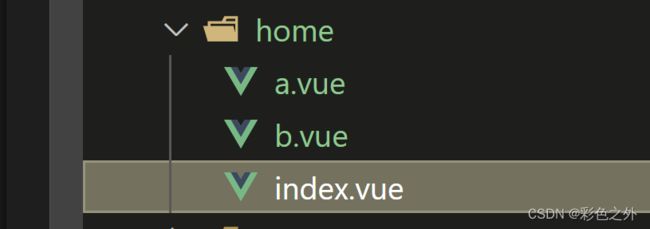- Sass (Scss) 与 Less 的区别与选择
智能编织者
sassscssless
Sass与Less的区别与选择1.语法差异2.特性与支持3.兼容性4.选择建议在前端开发中,CSS预处理器如Sass(SyntacticallyAwesomeStylesheets)和Less被广泛使用,它们通过引入变量、嵌套规则、混合、函数等特性,使CSS的开发过程更加高效和灵活。Sass和Less作为两大主流CSS预处理器,各自具有独特的优点和特性。本文将详细探讨Sass(特别是其语法扩展Sc
- JavaScript基础-全局作用域
難釋懷
javascript开发语言
在JavaScript编程中,理解变量的作用域是编写高效、可维护代码的关键之一。全局作用域是指变量在整个程序范围内都可访问的状态,这意味着它们可以在任何函数或代码块中被读取和修改。然而,过度使用全局变量也可能导致一些问题,如命名冲突和意外的副作用。本文将详细介绍全局作用域的概念、特性以及如何合理使用全局变量。一、什么是全局作用域?当一个变量在任何函数、代码块之外声明时,它就处于全局作用域下。这意味
- React 和 Vue _使用区别
开心小老虎
react知识点+组件vue3知识点+组件前端知识点vue.jsreact.js前端
目录一、框架介绍1.Vue2.React二、框架结构1.创建应用2.框架结构三、使用区别1.单页面组成2.样式3.显示响应式数据4.响应式html标签属性5.控制元素显隐6.条件渲染7.渲染列表react和vue是目前前端比较流行的两大框架,前端程序员应该将两种框架都掌握,本文总结一些基本知识点的使用区别。一、框架介绍1.VueVue是一个框架,也是一个生态。其功能覆盖了大部分前端开发常见的需求。
- Vue3 + TypeScript 实战经验:2025年高效开发指南
ctrl_cv工程师¥
typescriptjavascript前端
在2024年的前端工程化浪潮中,Vue3与TypeScript已成为企业级应用的黄金组合。本文将基于多个真实项目经验,从工程规范、类型安全、性能优化三个维度,分享实战技巧与避坑指南。一、工程配置:构建坚如磐石的基础1.脚手架选择与优化1.1推荐方案:使用Vite+create-vue初始化项目(2024年默认模板已集成TypeScript)关键配置://vite.config.tsexportde
- 【零基础JavaScript入门 | Day1】从“消费记账“案例学编程基础 ⭐表格制作+数据类型转换全解析
helbyYoung
JavaScrip学习javascript学习
【零基础JavaScript入门|Day1】从"消费记账"案例学编程基础⭐表格制作+数据类型转换全解析今日学习重点:✅数据与现实的映射关系→网页表格如何承载生活数据✅变量容器的本质→用let管理三大消费支出✅隐式类型转换技巧→+prompt()输入处理的妙用✅模板字符串实战→动态生成消费报表案例亮点:1️⃣用户交互三部曲:通过prompt()实现饮食/交通/娱乐费用的分步输入2️⃣自动统计系统:t
- 工程化与框架系列(32)--前端测试实践指南
一进制ᅟᅠ
前端工程化与框架前端
前端测试实践指南引言前端测试是保证应用质量的重要环节。本文将深入探讨前端测试的各个方面,包括单元测试、集成测试、端到端测试等,并提供实用的测试工具和最佳实践。测试概述前端测试主要包括以下类型:单元测试:测试独立组件和函数集成测试:测试多个组件的交互端到端测试:模拟用户行为的完整测试性能测试:测试应用性能指标快照测试:UI组件的视觉回归测试测试工具实现测试运行器//测试运行器类classTestRu
- ospf的内容解析
ZHGJX-春分时节爱中分
智能路由器网络
当然,以下是您提供的OSPF(开放最短路径优先)接口配置信息的翻译:---**OSPF进程1,路由器ID为12.1.1.2****接口信息**区域:0.0.0.0(未启用MPLSTE)**接口:12.1.1.2(千兆以太网0/0/1)**-成本:1-状态:BDR(备份指定路由器)-类型:广播-最大传输单元(MTU):1500-优先级:1-指定路由器:12.1.1.1-备份指定路由器:12.1.1.
- SEO 优化
前端岳大宝
前端核心知识总结前端html
以下是SEO(搜索引擎优化)的基础知识点梳理,从前端技术、内容策略到搜索引擎原理,覆盖核心优化方向:一、SEO基础概念定义与目标SEO是通过优化网站结构、内容和技术,提升网站在搜索引擎自然搜索结果中的排名,吸引更多免费流量。核心目标:满足用户搜索意图,同时符合搜索引擎爬虫的抓取规则。搜索引擎工作原理爬取(Crawling):搜索引擎蜘蛛(如Googlebot)抓取网页内容。索引(Indexing)
- VLAN和Trunk实验
青.衫
智能路由器网络
VLAN和Trunk实验实验拓扑实验需求1.按照图示给所有路由器(此处充当pc机)配置IP地址2.SW1和SW2上分别创建vlan10和vlan20,要求R1和R3属于vlan10,R2和R4属于vlan203.SW1和SW2相连的接口配置类型为trunk类型,允许vlan10和vlan20通过4.测试效果,同一vlan的路由器可以互通,不同vlan的路由器无法互通实验步骤1.路由器配置IP地址在
- vuex中使用vuex-persistedstate无法进行持久缓存
小小怪下士_---_
缓存前端javascriptvue.js
在vuex的mutations中发送axios请求造成响应数据无法持久缓存最近在开发一个基于vue3的后台管理系统,因为要使用到了动态路由和权限管理,所以需要请求用户所属角色的一个权限信息,并将这些信息通过vuex-persistedstate持久保存到localStorage中。起初我在配置vuex的中mutations中使用axios向服务端请求用户的权限信息,并使用vuex-persiste
- 代练系统源码小程序如何助力游戏代练行业数字化转型?
mysqlvue.jsphp
在电子竞技日益成为全球性娱乐和文化现象的今天,游戏代练服务作为连接高水平玩家与普通玩家的桥梁,其市场需求迅速增长。为满足这一需求,多客代练系统应运而生,它不仅简化了代练服务的匹配流程,还通过智能化管理提升了服务质量和用户体验。本文将深入探讨多客代练系统的核心优势、用户价值以及它如何塑造游戏竞技行业的未来。源码获取地址!!!!请点击!!!!前端框架主要负责用户界面的展示和交互。多客代练系统采用:un
- 监听F11浏览器全屏状态
小旋风01234
jsjavascript前端vue.js
说明全屏和非全屏经常因为,是F11或者控制台按钮按的判断不了,所以综合了下,下面的方法有效,下面是应对所有浏览器的兼容版本页面上代码是vue2的,vue3或者js需要自己改下,都是js核心是一个东西核心代码:data(){return{//全屏状态true全屏false非全屏isFullScreen:false,}},mounted(){//开局判断this.checkFullscreen()//
- 前端笔试高频算法题及JavaScript实现
GISer_Jinger
前端算法javascript
以下是前端笔试常见的编程算法题及JavaScript代码现,结合最新面试题整理:一、数组/字符串处理两数之和找出数组中两数之和等于目标值的索引consttwoSum=(nums,target)=>{constmap=newMap();for(leti=0;i{letmap=newMap(),max=0,left=0;for(letright=0;right[...newSet(arr.flat(I
- unplugin-vue-router 的基本使用
javascript
1.前言在Vue3开发过程中,每次创建新的页面都需要注册路由,需要在src/router.ts中新增页面的路径,并将URL路径映射到组件中,如下所示:import{createMemoryHistory,createRouter}from'vue-router'importHomePageViewfrom'./HomePageView.vue'importDevListViewfrom'./Dev
- 工程化与框架系列(31)--前端依赖管理实践
一进制ᅟᅠ
前端工程化与框架前端
前端依赖管理实践引言前端依赖管理是现代Web开发中的重要环节。本文将深入探讨前端依赖管理的最佳实践,包括包管理工具、版本控制、依赖分析和优化等方面,帮助开发者更好地管理项目依赖。依赖管理概述前端依赖管理主要包括以下方面:包管理工具:npm、yarn、pnpm等版本控制:语义化版本、锁文件等依赖分析:依赖树、循环依赖等依赖优化:体积优化、重复依赖等安全管理:漏洞检测、更新维护等依赖管理工具实现依赖分
- 边缘计算(Edge Computing)
Dream Algorithm
边缘计算人工智能
边缘计算(EdgeComputing)是一种分布式计算范式,它将数据处理和存储功能从传统的集中式云端转移到靠近数据源的网络边缘设备(如路由器、网关、本地服务器或终端设备)。边缘计算的目标是减少数据传输延迟、降低带宽压力,并提高系统的实时性和可靠性。边缘计算的核心概念靠近数据源边缘计算将计算资源部署在靠近数据生成的地方,而不是将所有数据发送到远程云端处理。分布式架构边缘计算采用分布式架构,将计算任务
- 【超全总结】JMeter vs K6 vs Locust,性能测试工具终极对比!
软件测试jmeter测试工具
引言在现代软件开发中,性能测试是保障系统稳定性和高并发能力的关键环节。然而,面对市面上众多的性能测试工具,我们该如何选择?今天,我们将对JMeter、K6、Locust进行全面对比,帮你找到最适合你的工具!1.工具概览工具语言适用场景优点缺点JMeterJava传统性能测试、WebAPI测试功能强大、插件丰富、支持GUI学习曲线陡峭,资源消耗大K6JavaScript现代DevOps、CI/CD集
- Vue.js 3 的设计思路:从声明式UI到高效渲染机制
前端 贾公子
vue.jsuiflutter
目录一、声明式UI与虚拟DOM的灵活性二、渲染器:虚拟DOM到真实DOM的桥梁三、组件的本质与实现四、编译与运行时的协同优化五、性能与可维护性的权衡总结Vue.js3作为新一代前端框架,其设计理念在声明式UI描述、虚拟DOM优化、组件化架构以及编译与运行时协作等方面实现了显著突破。本文将从多个角度深入探讨其设计思路。一、声明式UI与虚拟DOM的灵活性Vue.js3的核心特性之一是声明式UI描述,开
- python+flask实现360全景图和stl等多种格式模型浏览
mosquito_lover1
python
1.安装依赖pipinstallflask2.创建Flask应用创建一个基本的Flask应用,并设置路由来处理不同的文件类型。fromflaskimportFlask,render_template,send_from_directoryapp=Flask(__name__)#设置静态文件路径app.static_folder='static'@app.route('/')defindex():r
- 深入解析:构建高效单页应用(SPA)的最佳实践与示例
布兰妮甜
#Vue单页应用SPAVue.js前端
文章目录前言一、单页应用(SPA)的介绍二、单页应用(SPA)的优势三、构建单页应用(SPA)的基本步骤四、使用Vue.js构建一个简易的单页应用(SPA):任务管理器结语前言随着互联网技术的发展,用户对于网页应用的交互性和响应速度提出了更高的要求。传统的多页面应用(MPA)在每次用户交互时需要重新加载整个页面,这不仅增加了服务器的负担,也降低了用户体验。而单页应用(SinglePageAppli
- vue3 el-form校验 报错formRef.value.validate is not a function
J总裁的小芒果
vue.jselementuijavascript前端vue
这是需要校验的表单【每一行都需要校验】保存在保存按钮中打印formRef.value.validate()是有值的,所以我给它们增加了异步constformData=ref([])construles={name:[{required:true,message:'请输入姓名',trigger:['blur','change']}]}constsaveData=async()=>{constvali
- MyBatis底层原理深度解析:动态代理与注解如何实现ORM映射
rider189
java开发语言mybatis
一、引言MyBatis作为一款优秀的ORM框架,其核心设计思想是通过动态代理和注解将接口方法与SQL操作解耦。开发者只需定义Mapper接口并添加注解,便能实现数据库操作,这背后隐藏着精妙的动态代理机制与源码设计。本文将从源码层解析MyBatis如何实现这一过程。二、动态代理机制:从接口到实现类关键点:MyBatis通过JDK动态代理为Mapper接口生成代理对象,拦截所有方法调用,将其路由到SQ
- 前端发布缓存导致白屏解决方案
洛祁枫
web前端前端缓存
解决发布H5后因为本地缓存白屏方案一、核心配置优化(前提是访问网站的请求能抵达服务器)方案一:前端项目设置全局不缓存方案运行逻辑:在H5服务器配置中增加Cache-Control:no-cache或max-age=0响应头,禁用静态资源缓存;优点:能在服务器出口处最大可能地解决发布项目缓存问题缺点:用户在不同界面跳转都会重新加载界面信息,影响整个前端加载速度,高并发时容易造成带宽压力方案二:首页
- Web 开发的“三件套”
zhangpeng455547940
Web开发reactnativereact.jsjavascript
HTML:定义内容结构。CSS:控制样式布局。JavaScript:实现动态行为和复杂逻辑。JavaScript应用场景前端开发:操作DOM、处理用户事件、实现动画等。后端开发:通过Node.js构建服务器端应用。跨平台开发:Electron(桌面应用)、ReactNative(移动端)等。
- [CRMEB知识付费系统]移动端课程列表一级分类模式实现
道法自然|~
CRMEBvuehtml5css
写在前面最近在使用crmeb知识付费下系统的时候,发现默认是二级分类模式,但需求需要一级直接展示内容所以只能重构一下了,重构只改动了前端,非必要不去改动后端,会很麻烦.....目录写在前面实施准备代码结构与功能说明1.页面结构2.数据与状态管理3.核心方法解析3.1获取一级分类(getCateList)3.2获取二级分类(getSubject)3.3加载课程列表(getSpecialList)3.
- 从零实现OSS阿里云图片上传:前端采用的vue3+element-plus,后端采用javaspingboot,实现上传图片到云,然后存储数据库链接能够回显的效果
绝顶少年
阿里云前端数据库
后端(JavaSpringBoot)1.添加依赖在pom.xml中添加必要的依赖,包括阿里云OSSSDK、SpringBootWeb、MyBatis-Plus等:org.springframework.bootspring-boot-starter-webcom.baomidoumybatis-plus-boot-starter3.4.3.4com.aliyun.ossaliyun-sdk-oss
- 前端如何通过后端返回的文件流下载csv文件
陈正阳~
前端前端javascriptjson
前端如何通过后端返回的文件流下载csv文件有一个下载的csv,后端返回了文件流有一个下载的csv,后端返回了文件流exportfunctionexportCSV(data:exportCSVParams):any{returnaxios({url:`/export/exportCSV?tableName=${data.tableName}&dataBaseName=${data.dataBaseN
- VNode
码农 小王
javascript
1.什么是VNode?VNode的全称是VirtualNode,也就是虚拟节点.它是指一个抽象的节点对象,用于描述真实DOM中的元素。在前端框架中,通过操作VNode来实现虚拟DOM,从而提高性能。2.VNode的本质本质上是JavaScript对象,这个对象就是更加轻量级的对DOM的描述3.为什么需要VNode?在前端框架中,我们通常需要在页面中操作DOM元素,如增删改查等操作。但是DOM操作是
- router的内置函数
码农 小王
前端javascript
Router的内置函数主要包括以下几种:1.router.beforeEach:全局前置守卫,在路由跳转前自动被调用,用于拦截导航并进行一些跳转前的处理,例如验证用户是否登录。可以在router.beforeEach中定义函数,并传入一个包含to和from等参数的函数。例如:router.beforeEach((to,from,next)=>{if(someCondition){next(
- HCIA-ACL
蜡笔小呆呆
网络ACL
一、基本概念1、概念:ACL即访问控制列表,是一种基于包过滤的访问控制技术。由一条或多条规则组成的集合,通过定义动作来确保哪些数据包可以通过,哪些需要被阻止。2、基本原理:ACL通过规则对数据包分类,规则定义了源地址、目的地址、端口号等匹配条件。设备依据这些规则匹配报文,再根据应用ACL的业务模块的处理策略,决定允许或阻止报文通过。3、作用:用于匹配指定流量或路由,可以针对控制层面进行匹配也可以针
- mondb入手
木zi_鸣
mongodb
windows 启动mongodb 编写bat文件,
mongod --dbpath D:\software\MongoDBDATA
mongod --help 查询各种配置
配置在mongob
打开批处理,即可启动,27017原生端口,shell操作监控端口 扩展28017,web端操作端口
启动配置文件配置,
数据更灵活
- 大型高并发高负载网站的系统架构
bijian1013
高并发负载均衡
扩展Web应用程序
一.概念
简单的来说,如果一个系统可扩展,那么你可以通过扩展来提供系统的性能。这代表着系统能够容纳更高的负载、更大的数据集,并且系统是可维护的。扩展和语言、某项具体的技术都是无关的。扩展可以分为两种:
1.
- DISPLAY变量和xhost(原创)
czmmiao
display
DISPLAY
在Linux/Unix类操作系统上, DISPLAY用来设置将图形显示到何处. 直接登陆图形界面或者登陆命令行界面后使用startx启动图形, DISPLAY环境变量将自动设置为:0:0, 此时可以打开终端, 输出图形程序的名称(比如xclock)来启动程序, 图形将显示在本地窗口上, 在终端上输入printenv查看当前环境变量, 输出结果中有如下内容:DISPLAY=:0.0
- 获取B/S客户端IP
周凡杨
java编程jspWeb浏览器
最近想写个B/S架构的聊天系统,因为以前做过C/S架构的QQ聊天系统,所以对于Socket通信编程只是一个巩固。对于C/S架构的聊天系统,由于存在客户端Java应用,所以直接在代码中获取客户端的IP,应用的方法为:
String ip = InetAddress.getLocalHost().getHostAddress();
然而对于WEB
- 浅谈类和对象
朱辉辉33
编程
类是对一类事物的总称,对象是描述一个物体的特征,类是对象的抽象。简单来说,类是抽象的,不占用内存,对象是具体的,
占用存储空间。
类是由属性和方法构成的,基本格式是public class 类名{
//定义属性
private/public 数据类型 属性名;
//定义方法
publ
- android activity与viewpager+fragment的生命周期问题
肆无忌惮_
viewpager
有一个Activity里面是ViewPager,ViewPager里面放了两个Fragment。
第一次进入这个Activity。开启了服务,并在onResume方法中绑定服务后,对Service进行了一定的初始化,其中调用了Fragment中的一个属性。
super.onResume();
bindService(intent, conn, BIND_AUTO_CREATE);
- base64Encode对图片进行编码
843977358
base64图片encoder
/**
* 对图片进行base64encoder编码
*
* @author mrZhang
* @param path
* @return
*/
public static String encodeImage(String path) {
BASE64Encoder encoder = null;
byte[] b = null;
I
- Request Header简介
aigo
servlet
当一个客户端(通常是浏览器)向Web服务器发送一个请求是,它要发送一个请求的命令行,一般是GET或POST命令,当发送POST命令时,它还必须向服务器发送一个叫“Content-Length”的请求头(Request Header) 用以指明请求数据的长度,除了Content-Length之外,它还可以向服务器发送其它一些Headers,如:
- HttpClient4.3 创建SSL协议的HttpClient对象
alleni123
httpclient爬虫ssl
public class HttpClientUtils
{
public static CloseableHttpClient createSSLClientDefault(CookieStore cookies){
SSLContext sslContext=null;
try
{
sslContext=new SSLContextBuilder().l
- java取反 -右移-左移-无符号右移的探讨
百合不是茶
位运算符 位移
取反:
在二进制中第一位,1表示符数,0表示正数
byte a = -1;
原码:10000001
反码:11111110
补码:11111111
//异或: 00000000
byte b = -2;
原码:10000010
反码:11111101
补码:11111110
//异或: 00000001
- java多线程join的作用与用法
bijian1013
java多线程
对于JAVA的join,JDK 是这样说的:join public final void join (long millis )throws InterruptedException Waits at most millis milliseconds for this thread to die. A timeout of 0 means t
- Java发送http请求(get 与post方法请求)
bijian1013
javaspring
PostRequest.java
package com.bijian.study;
import java.io.BufferedReader;
import java.io.DataOutputStream;
import java.io.IOException;
import java.io.InputStreamReader;
import java.net.HttpURL
- 【Struts2二】struts.xml中package下的action配置项默认值
bit1129
struts.xml
在第一部份,定义了struts.xml文件,如下所示:
<!DOCTYPE struts PUBLIC
"-//Apache Software Foundation//DTD Struts Configuration 2.3//EN"
"http://struts.apache.org/dtds/struts
- 【Kafka十三】Kafka Simple Consumer
bit1129
simple
代码中关于Host和Port是割裂开的,这会导致单机环境下的伪分布式Kafka集群环境下,这个例子没法运行。
实际情况是需要将host和port绑定到一起,
package kafka.examples.lowlevel;
import kafka.api.FetchRequest;
import kafka.api.FetchRequestBuilder;
impo
- nodejs学习api
ronin47
nodejs api
NodeJS基础 什么是NodeJS
JS是脚本语言,脚本语言都需要一个解析器才能运行。对于写在HTML页面里的JS,浏览器充当了解析器的角色。而对于需要独立运行的JS,NodeJS就是一个解析器。
每一种解析器都是一个运行环境,不但允许JS定义各种数据结构,进行各种计算,还允许JS使用运行环境提供的内置对象和方法做一些事情。例如运行在浏览器中的JS的用途是操作DOM,浏览器就提供了docum
- java-64.寻找第N个丑数
bylijinnan
java
public class UglyNumber {
/**
* 64.查找第N个丑数
具体思路可参考 [url] http://zhedahht.blog.163.com/blog/static/2541117420094245366965/[/url]
*
题目:我们把只包含因子
2、3和5的数称作丑数(Ugly Number)。例如6、8都是丑数,但14
- 二维数组(矩阵)对角线输出
bylijinnan
二维数组
/**
二维数组 对角线输出 两个方向
例如对于数组:
{ 1, 2, 3, 4 },
{ 5, 6, 7, 8 },
{ 9, 10, 11, 12 },
{ 13, 14, 15, 16 },
slash方向输出:
1
5 2
9 6 3
13 10 7 4
14 11 8
15 12
16
backslash输出:
4
3
- [JWFD开源工作流设计]工作流跳跃模式开发关键点(今日更新)
comsci
工作流
既然是做开源软件的,我们的宗旨就是给大家分享设计和代码,那么现在我就用很简单扼要的语言来透露这个跳跃模式的设计原理
大家如果用过JWFD的ARC-自动运行控制器,或者看过代码,应该知道在ARC算法模块中有一个函数叫做SAN(),这个函数就是ARC的核心控制器,要实现跳跃模式,在SAN函数中一定要对LN链表数据结构进行操作,首先写一段代码,把
- redis常见使用
cuityang
redis常见使用
redis 通常被认为是一个数据结构服务器,主要是因为其有着丰富的数据结构 strings、map、 list、sets、 sorted sets
引入jar包 jedis-2.1.0.jar (本文下方提供下载)
package redistest;
import redis.clients.jedis.Jedis;
public class Listtest
- 配置多个redis
dalan_123
redis
配置多个redis客户端
<?xml version="1.0" encoding="UTF-8"?><beans xmlns="http://www.springframework.org/schema/beans" xmlns:xsi=&quo
- attrib命令
dcj3sjt126com
attr
attrib指令用于修改文件的属性.文件的常见属性有:只读.存档.隐藏和系统.
只读属性是指文件只可以做读的操作.不能对文件进行写的操作.就是文件的写保护.
存档属性是用来标记文件改动的.即在上一次备份后文件有所改动.一些备份软件在备份的时候会只去备份带有存档属性的文件.
- Yii使用公共函数
dcj3sjt126com
yii
在网站项目中,没必要把公用的函数写成一个工具类,有时候面向过程其实更方便。 在入口文件index.php里添加 require_once('protected/function.php'); 即可对其引用,成为公用的函数集合。 function.php如下:
<?php /** * This is the shortcut to D
- linux 系统资源的查看(free、uname、uptime、netstat)
eksliang
netstatlinux unamelinux uptimelinux free
linux 系统资源的查看
转载请出自出处:http://eksliang.iteye.com/blog/2167081
http://eksliang.iteye.com 一、free查看内存的使用情况
语法如下:
free [-b][-k][-m][-g] [-t]
参数含义
-b:直接输入free时,显示的单位是kb我们可以使用b(bytes),m
- JAVA的位操作符
greemranqq
位运算JAVA位移<<>>>
最近几种进制,加上各种位操作符,发现都比较模糊,不能完全掌握,这里就再熟悉熟悉。
1.按位操作符 :
按位操作符是用来操作基本数据类型中的单个bit,即二进制位,会对两个参数执行布尔代数运算,获得结果。
与(&)运算:
1&1 = 1, 1&0 = 0, 0&0 &
- Web前段学习网站
ihuning
Web
Web前段学习网站
菜鸟学习:http://www.w3cschool.cc/
JQuery中文网:http://www.jquerycn.cn/
内存溢出:http://outofmemory.cn/#csdn.blog
http://www.icoolxue.com/
http://www.jikexue
- 强强联合:FluxBB 作者加盟 Flarum
justjavac
r
原文:FluxBB Joins Forces With Flarum作者:Toby Zerner译文:强强联合:FluxBB 作者加盟 Flarum译者:justjavac
FluxBB 是一个快速、轻量级论坛软件,它的开发者是一名德国的 PHP 天才 Franz Liedke。FluxBB 的下一个版本(2.0)将被完全重写,并已经开发了一段时间。FluxBB 看起来非常有前途的,
- java统计在线人数(session存储信息的)
macroli
javaWeb
这篇日志是我写的第三次了 前两次都发布失败!郁闷极了!
由于在web开发中常常用到这一部分所以在此记录一下,呵呵,就到备忘录了!
我对于登录信息时使用session存储的,所以我这里是通过实现HttpSessionAttributeListener这个接口完成的。
1、实现接口类,在web.xml文件中配置监听类,从而可以使该类完成其工作。
public class Ses
- bootstrp carousel初体验 快速构建图片播放
qiaolevip
每天进步一点点学习永无止境bootstrap纵观千象
img{
border: 1px solid white;
box-shadow: 2px 2px 12px #333;
_width: expression(this.width > 600 ? "600px" : this.width + "px");
_height: expression(this.width &
- SparkSQL读取HBase数据,通过自定义外部数据源
superlxw1234
sparksparksqlsparksql读取hbasesparksql外部数据源
关键字:SparkSQL读取HBase、SparkSQL自定义外部数据源
前面文章介绍了SparSQL通过Hive操作HBase表。
SparkSQL从1.2开始支持自定义外部数据源(External DataSource),这样就可以通过API接口来实现自己的外部数据源。这里基于Spark1.4.0,简单介绍SparkSQL自定义外部数据源,访
- Spring Boot 1.3.0.M1发布
wiselyman
spring boot
Spring Boot 1.3.0.M1于6.12日发布,现在可以从Spring milestone repository下载。这个版本是基于Spring Framework 4.2.0.RC1,并在Spring Boot 1.2之上提供了大量的新特性improvements and new features。主要包含以下:
1.提供一个新的sprin
![]() 前期回顾
前期回顾![]()



